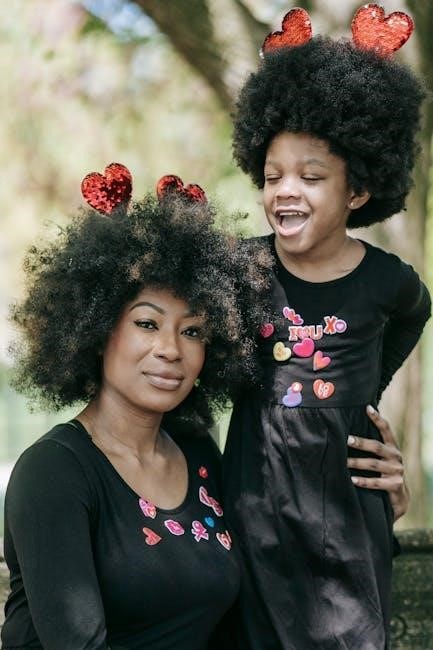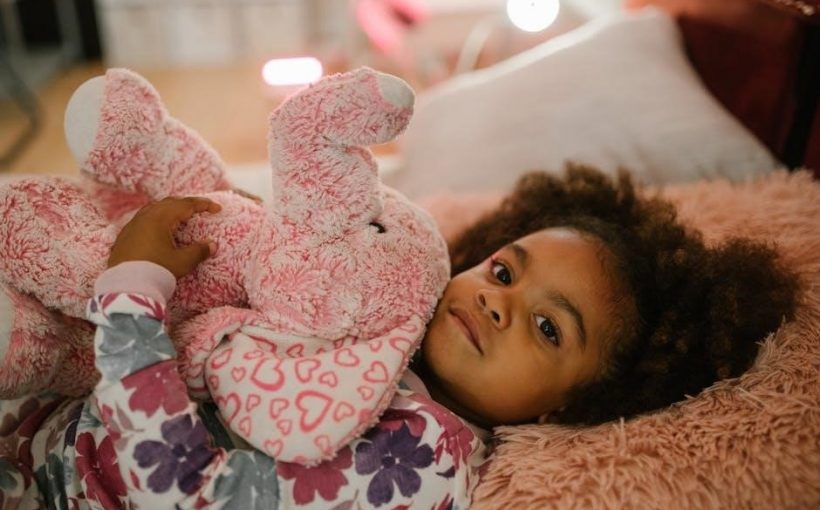Capturing Kids’ Hearts is an educational program focused on building strong teacher-student relationships through emotional connections and mutual respect, utilizing the 4 Questions to foster a positive classroom environment․

What is Capturing Kids’ Hearts?
Capturing Kids’ Hearts is an educational program designed to help teachers, administrators, and staff create meaningful connections with students․ It focuses on social-emotional learning, character development, and restorative practices to build a positive school culture․ The program emphasizes the importance of relationships, mutual respect, and accountability, encouraging students to feel valued and connected to their school community․ By fostering emotional and academic growth, Capturing Kids’ Hearts helps students achieve higher academic success, improve behavior, and develop essential life skills․ The program’s cornerstone is the 4 Questions, which guide the creation of a social contract that promotes kindness, responsibility, and conflict resolution․
The Importance of Building Connections with Students

Building strong connections with students is vital for creating a supportive and inclusive learning environment․ When students feel valued and understood, they are more likely to engage academically and behave positively․ Capturing Kids’ Hearts emphasizes the importance of relationships in education, as connected students tend to perform better, exhibit better behavior, and have higher attendance rates․ By fostering trust and mutual respect, teachers can create a culture of accountability and empathy, where students feel safe to grow emotionally and academically․ These connections also help students develop essential life skills, such as problem-solving and collaboration, while fostering a sense of belonging and purpose in the classroom․
Overview of the 4 Questions
The 4 Questions are a cornerstone of the Capturing Kids’ Hearts program, designed to establish clear expectations and foster mutual respect in the classroom․ The questions are: 1) How do you want to be treated by me? 2) How do you think I want to be treated by you? 3) How do you want to treat each other? and 4) How should we treat each other when there is a conflict? These questions guide students in creating a social contract that outlines classroom expectations, promoting accountability and positive interactions․ They encourage open dialogue, empathy, and self-reflection, helping students take ownership of their behavior and relationships․
Understanding the 4 Questions
The 4 Questions are foundational in Capturing Kids’ Hearts, guiding students to reflect on mutual respect, expectations, and conflict resolution, fostering a positive and inclusive classroom environment․
How Do You Want to Be Treated by Me?
This question encourages students to reflect on how they desire to be treated by their teacher, fostering mutual respect and understanding; It helps establish clear expectations and promotes a positive classroom environment by allowing students to voice their needs and feel heard․ By addressing this question, teachers can create a foundation of trust and respect, ensuring students feel valued and supported․ This dialogue also helps students understand the importance of treating others with kindness and dignity, laying the groundwork for a collaborative and inclusive classroom culture․ It is the first step in building a social contract that guides interactions and behavior within the classroom․
How Do You Think I Want to Be Treated by You?
This question prompts students to consider the teacher’s perspective, fostering empathy and mutual understanding․ It encourages students to think about how their actions may impact others and to reflect on the importance of treating the teacher with respect․ By addressing this question, students develop a sense of responsibility and accountability in their interactions with the teacher․ It also helps establish a reciprocal relationship where both parties feel valued and respected․ This dialogue reinforces the idea that respect is a two-way street and is essential for maintaining a positive and productive learning environment․ It complements the first question by ensuring both teacher and student perspectives are considered․
How Do You Want to Treat Each Other?
This question focuses on fostering a sense of community and mutual respect among students․ It encourages them to think about how they can create a positive and inclusive environment for everyone in the classroom․ By discussing this question, students develop a shared understanding of expected behaviors and learn to take responsibility for their actions toward peers․ This dialogue helps build empathy, promotes teamwork, and establishes a collaborative culture․ It also lays the foundation for a social contract, where students agree on how they will treat one another with kindness, respect, and fairness․ This collective approach strengthens relationships and creates a supportive atmosphere for learning;
How Should We Treat Each Other When There Is a Conflict?
This question guides students in understanding how to navigate conflicts respectfully and constructively․ It emphasizes the importance of maintaining kindness and empathy, even during disagreements․ By addressing this, students learn to communicate effectively, listen actively, and seek solutions that honor everyone’s feelings․ Teachers encourage students to use “put-ups” to counteract “put-downs,” fostering a culture of restoration and understanding․ This question helps students develop problem-solving skills and reinforces the idea that conflicts can be resolved while preserving relationships․ It also teaches accountability and the value of treating others with dignity, even in challenging situations, to maintain a positive classroom environment․

Classroom Application of the 4 Questions
The 4 Questions foster mutual respect and positive interactions, helping teachers address misbehavior and conflicts while building a supportive classroom culture focused on empathy and accountability․
Using the 4 Questions for Redirection
The 4 Questions are a powerful tool for redirecting student behavior while maintaining positive relationships․ Teachers use the questions to guide students in reflecting on their actions and understanding expectations․ When misbehavior occurs, the questions help students identify how their actions may have affected others and encourage them to take responsibility․ For example, asking, “How should we treat each other when there is a conflict?” prompts students to think critically about resolving disagreements respectfully․ This approach fosters accountability, empathy, and self-regulation, creating a supportive classroom culture․ By focusing on mutual respect and understanding, the 4 Questions empower students to make better choices and grow socially and emotionally․
Creating a Social Contract
A social contract is a collaborative agreement between students and teachers that outlines expectations for classroom behavior․ Using the 4 Questions, students discuss and define how they want to be treated and how they will treat others․ This process encourages ownership and accountability․ For instance, students might agree on rules like “Respect each other’s ideas” or “Listen when others speak․” The contract is displayed prominently in the classroom, serving as a constant reminder of shared commitments․ By involving students in its creation, the social contract fosters a sense of community and responsibility, promoting a positive and respectful learning environment where everyone feels valued and heard․

Implementing the CKH Discipline Model
The CKH Discipline Model provides a structured approach to addressing misbehavior while maintaining positive relationships․ Teachers use the 4 Questions to guide students in understanding expectations and resolving conflicts․ When misbehavior occurs, the teacher redirects the student using the questions, encouraging reflection and accountability․ For example, asking, “How should we treat each other when there’s a conflict?” helps students identify appropriate actions․ The model emphasizes restorative practices, such as giving “put-ups” to counteract hurtful words․ This approach focuses on teaching responsibility rather than punishing, fostering a culture of respect and empathy․ The goal is to create a supportive environment where students feel connected and accountable for their actions․

The EXCEL Model in Capturing Kids’ Hearts

The EXCEL Model emphasizes Emotional Check-Ins, Engaging Lessons, clear Expectations, Caring Relationships, and Leadership Opportunities, fostering a supportive classroom environment that promotes social-emotional growth and academic success․
E ⎻ Emotional Check-Ins
Emotional Check-Ins are a cornerstone of the EXCEL Model, focusing on understanding students’ emotional states through open dialogue and observation․ Teachers use this practice to connect with students by asking questions, acknowledging feelings, and addressing personal or academic challenges․ This creates a safe and supportive environment, encouraging students to express themselves freely․ By actively listening and showing genuine care, educators build trust and strengthen relationships․ Emotional Check-Ins also help identify early signs of distress, allowing for timely interventions․ This proactive approach fosters empathy, resilience, and a positive classroom culture, ensuring students feel valued and understood․ Regular check-ins are essential for nurturing emotional well-being and academic success․
E ⏤ Engaging Lessons
Engaging Lessons are a vital component of the EXCEL Model, designed to captivate students’ interest and promote active participation․ Teachers create relevant and meaningful learning experiences that align with students’ interests and real-world applications․ By incorporating interactive activities, hands-on tasks, and technology, educators ensure that lessons are dynamic and thought-provoking․ This approach not only enhances academic engagement but also fosters creativity and critical thinking․ Engaging lessons encourage students to take ownership of their learning, leading to higher motivation and improved academic performance․ By making content relatable and fun, teachers build a love for learning that extends beyond the classroom, preparing students for future success․ Consistency and creativity are key to maintaining student engagement․
X ⏤ Expectations and Responsibilities
X stands for Expectations and Responsibilities in the EXCEL Model, emphasizing clear roles and accountability for both teachers and students․ Establishing high yet achievable expectations helps create a structured and focused learning environment․ Teachers communicate these expectations clearly, ensuring students understand their responsibilities․ This mutual understanding fosters accountability, as students take ownership of their actions and learning outcomes․ By setting clear guidelines, teachers promote a sense of duty and respect among students, aligning their efforts with academic and social goals․ This component ensures that everyone in the classroom works collaboratively toward shared objectives, building a culture of responsibility and mutual support․ Consistency in enforcing expectations is key to maintaining a productive classroom atmosphere․
C ⎻ Caring Relationships
Caring Relationships are the cornerstone of the EXCEL Model, emphasizing the importance of genuine connections between teachers, students, and peers․ By showing empathy and understanding, educators create a supportive environment where students feel valued and secure․ This fosters trust, encouraging students to open up about their needs and challenges․ Caring relationships also promote a sense of belonging, which is crucial for academic engagement and social growth․ Teachers are encouraged to use positive greetings, emotional check-ins, and affirmations to nurture these connections․ When students feel cared for, they are more likely to develop positive attitudes toward learning and behave responsibly, leading to a more harmonious and productive classroom․ This approach strengthens the overall school community, ensuring every student feels supported and valued․
L ⎻ Leadership Opportunities
Leadership Opportunities empower students to take ownership of their learning and classroom culture․ By giving students roles such as mentoring peers or leading discussions, teachers help build confidence and responsibility․ These opportunities encourage students to practice decision-making and collaboration, fostering a sense of accountability․ Leadership roles also allow students to model positive behavior, reinforcing the social contract created through the 4 Questions․ This not only enhances their personal growth but also contributes to a respectful and inclusive classroom environment․ When students feel empowered, they are more likely to excel academically and socially, creating a ripple effect of positivity throughout the school․ This approach prepares students for future successes by teaching valuable leadership skills․
Best Practices for Teachers
Consistently using positive greetings, EXCEL modeling, and launching students ensures a supportive environment, fostering accountability while maintaining strong relationships and encouraging student growth and responsibility daily․
Positive Greetings and Good Things
Positive greetings and good things are foundational in Capturing Kids’ Hearts, fostering a welcoming classroom environment․ Teachers greet students warmly at the door, creating a sense of belonging and connection․ Starting class with positive affirmations, such as “Good Things,” encourages students to share successes or gratitude, promoting social-emotional learning․ This practice strengthens relationships, builds trust, and sets a positive tone for the day․ It also helps students feel valued and supported, creating a safe space for learning and growth․ Consistency in these practices ensures students feel secure and motivated, laying the groundwork for a productive and respectful classroom culture․
Modeling behavior with EXCEL
Modeling behavior with EXCEL in Capturing Kids’ Hearts ensures teachers demonstrate the values and expectations they want students to emulate․ The EXCEL model emphasizes Emotional Check-Ins, Engaging Lessons, Expectations, Caring Relationships, and Leadership Opportunities․ Teachers show genuine care through emotional check-ins, creating a safe and supportive environment․ They deliver engaging lessons with enthusiasm, making learning relevant and meaningful․ By clearly modeling expectations and practicing caring relationships, teachers build trust and foster accountability․ Leadership opportunities empower students to take ownership of their learning and behavior․ Consistently modeling these behaviors helps students understand and internalize the values, creating a positive and respectful classroom culture․
Launching Students to Their Next Destination
Launching students to their next destination is a key component of Capturing Kids’ Hearts, emphasizing the importance of meaningful transitions․ Teachers use this practice to empower students, ensuring they feel prepared and confident for their next steps․ This involves setting clear expectations, offering motivational encouragement, and reinforcing positive habits․ By providing a sense of closure and purpose, teachers help students transition smoothly from one activity to another․ This practice fosters responsibility, accountability, and a growth mindset, equipping students with the skills needed for future success․ It also strengthens the teacher-student relationship, showing genuine care and investment in each student’s journey․

Impact and Benefits
Capturing Kids’ Hearts fosters improved behavior, enhances academic performance, and strengthens teacher-student relationships, creating a supportive environment for student success and emotional growth․
Improved Student Behavior

Capturing Kids’ Hearts significantly enhances student behavior by fostering a culture of respect and accountability․ Through the use of the 4 Questions, teachers establish clear expectations, encouraging students to reflect on their actions and take responsibility․ This approach promotes positive interactions, reducing conflicts and misbehavior․ The program’s emphasis on emotional connections and mutual respect creates a supportive environment where students feel valued, leading to improved self-regulation and decision-making․ Consistent use of the 4 Questions ensures accountability while maintaining relationships, resulting in a more focused and respectful classroom atmosphere․ This holistic approach not only addresses behavioral challenges but also nurtures students’ social and emotional growth․

Enhanced Academic Performance
Capturing Kids’ Hearts fosters a supportive learning environment that directly enhances academic performance․ By building strong emotional connections and using the 4 Questions, teachers create a classroom culture where students feel secure and motivated․ This program emphasizes engagement through relevant lessons and positive interactions, leading to higher student participation and focus․ Research indicates that when students feel connected to their teachers and peers, they demonstrate improved academic outcomes․ The EXCEL model’s focus on meaningful content and emotional check-ins ensures students are both intellectually stimulated and emotionally supported, resulting in greater academic success and a stronger desire to learn․ This approach empowers students to thrive academically and socially․
Stronger Teacher-Student Relationships
Capturing Kids’ Hearts emphasizes the importance of building strong, genuine relationships between teachers and students․ Through the 4 Questions and the EXCEL model, educators create a foundation of trust and respect․ Positive greetings, emotional check-ins, and consistent expectations help students feel valued and supported․ Teachers who model these behaviors foster a classroom environment where students feel safe to express themselves․ This approach not only strengthens individual relationships but also promotes a sense of community․ By prioritizing connection, Capturing Kids’ Hearts helps teachers establish meaningful bonds with their students, leading to a more positive and productive learning experience for everyone involved․
Capturing Kids’ Hearts equips educators to build meaningful connections, fostering a positive classroom culture through the 4 Questions and EXCEL model, leading to improved behavior and academic success․
Capturing Kids’ Hearts emphasizes building connections through the 4 Questions, fostering mutual respect and accountability․ It promotes a positive classroom culture using the EXCEL model, which includes emotional check-ins, engaging lessons, clear expectations, caring relationships, and leadership opportunities․ The program helps teachers manage behavior consistently while maintaining strong relationships with students․ By focusing on social-emotional learning and restorative practices, it improves academic performance and reduces disciplinary issues․ The approach encourages teachers to greet students positively, model desired behavior, and create a supportive environment․ Ultimately, Capturing Kids’ Hearts helps educators create a nurturing school culture that benefits both students and staff․
Final Thoughts on Capturing Kids’ Hearts
Capturing Kids’ Hearts is a transformative approach that prioritizes relationships and mutual respect in education․ By focusing on the 4 Questions and the EXCEL model, educators create a supportive environment that fosters academic and emotional growth․ The program’s emphasis on social-emotional learning and restorative practices helps students feel valued and connected, leading to improved behavior and stronger teacher-student relationships․ While some teachers may find certain aspects challenging, the overall impact on school culture and student success is undeniable․ Capturing Kids’ Hearts equips educators with tools to inspire and empower students, leaving a lasting legacy of compassion and achievement in their classrooms and beyond․
